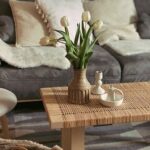In the world of interior design, finding the perfect style for your space can be a daunting task. With so many design styles to choose from, it’s easy to feel overwhelmed and unsure of which direction to take. In this comprehensive guide, we’ll explore various decorating styles, their key elements, and how to incorporate them into your home. Whether you’re a fan of sleek, modern designs or prefer something more traditional, there’s a style out there for everyone. So dive in and discover the perfect design style for your space.
Modern and Contemporary Design
Often used interchangeably, modern and contemporary design styles are both rooted in clean lines, simple forms, and minimalism. However, there are some subtle differences between the two.
Modern design refers to a specific period in history, typically the mid-20th century. It is characterized by clean lines, a neutral color palette, and natural materials such as wood and leather. Iconic furniture designs from this era, like the Eames Lounge Chair and the Barcelona Chair, are still highly sought after today.
Contemporary design is ever-evolving, reflecting the current trends and attitudes of the time. It takes cues from various design styles, often incorporating elements from modern, industrial, and even traditional design. Key characteristics of contemporary design include open spaces, large windows, and bold geometric shapes. In terms of color, contemporary design often favors a mix of neutrals, black, and white, with pops of bold color.
To incorporate these styles into your home, focus on clean lines and simplicity when selecting furniture and decor. Opt for pieces with minimal ornamentation and choose a color palette that consists mainly of neutrals, with a few bold accents for visual interest.
Traditional and Classic Design
For those who appreciate a more timeless and elegant approach to interior design, traditional and classic styles may be the perfect fit.
Traditional design is inspired by 18th and 19th-century European decor, with a focus on intricate details, luxurious materials, and rich, warm colors. Common elements of traditional design include dark wood tones, ornate furniture, and sumptuous fabrics like velvet and silk. In addition, traditional design often features classic patterns, such as damask, floral, and paisley.
Classic design is a more refined and restrained version of traditional design, drawing inspiration from ancient Greek and Roman architecture. It is characterized by elegant lines, symmetry, and a muted color palette. Classic design elements include columns, pilasters, and arches, as well as furniture with refined, sculptural forms.
To incorporate traditional or classic design into your home, choose furniture with ornate detailing and rich materials. Consider incorporating classic patterns and traditional artwork or accessories for a timeless, sophisticated look. For a more understated approach, opt for classic design elements like columns and arches in your architectural features.
Industrial and Urban Design
If you’re drawn to raw, unfinished spaces and love the look of exposed materials, industrial and urban design styles might be right up your alley.
Industrial design is characterized by exposed brick walls, metal beams, and concrete flooring. This style often features elements like large windows and high ceilings, which create a sense of openness and provide ample natural light. In terms of furniture and decor, industrial design favors reclaimed wood, metal accents, and vintage items.
Urban design is a more polished version of industrial design, combining the rawness of exposed materials with modern, sleek lines and contemporary elements. An urban design space might feature furniture pieces made from a mix of materials, like metal and wood, as well as bold artwork and vibrant colors.
To bring an industrial or urban design aesthetic to your home, embrace the use of raw materials and exposed elements. Choose furniture pieces made of reclaimed wood or metal, and consider incorporating vintage items and bold artwork into your space.
Eclectic and Bohemian Design
For those who enjoy a more whimsical and free-spirited approach to interior design, eclectic and bohemian styles offer endless possibilities for creativity and self-expression.
Eclectic design is all about creating a harmonious mix of different styles, colors, and textures. It’s about breaking rules and experimenting with unexpected combinations, resulting in a space that is uniquely yours. Key elements of eclectic design include a mix of patterns, textures, and materials, as well as a bold, vibrant color palette.
Bohemian design is a more specific version of eclectic design, with a focus on global influences and a relaxed, laid-back vibe. Common elements of bohemian design include natural materials, such as rattan and hemp, as well as an abundance of plants, textiles, and artwork from around the world.
To incorporate eclectic or bohemian design into your home, don’t be afraid to mix and match different styles, colors, and textures. Embrace the use of global-inspired textiles and artwork, and consider incorporating plants and natural materials into your space.
Find Your Perfect Decorating Style
With so many different decorating styles to consider, finding the perfect fit for your home can feel like a daunting task. But by exploring various design styles and understanding their key elements, you can create a space that truly reflects your personal taste and style. From sleek, modern designs to timeless, traditional aesthetics, there’s a decorating style out there for everyone. So don’t be afraid to experiment and find the perfect design style that speaks to you and transforms your space into a beautiful, inviting home.



